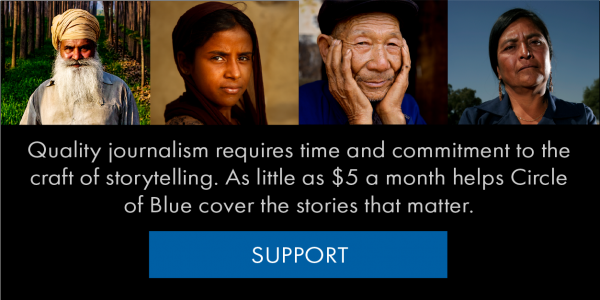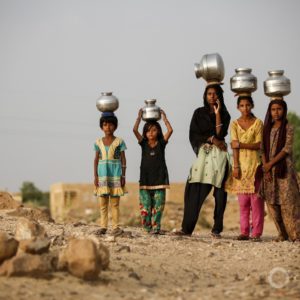The Stream, December 18: Polluted Rivers in Bengaluru, India, Infect Surrounding Groundwater
The Global Rundown
Tainted rivers in Bengaluru, India, pollute groundwater around the city. The number of people living in flood-prone areas of Japan is on the rise. The U.S. Bureau of Reclamation says Southwestern U.S. states must agree to a drought-contingency plan for the Colorado River basin by January 31, 2019. Farmer-herder conflicts in Nigeria have caused more than 3,000 deaths in the last three years. Developers in dry northeast Brazil encourage farmers to feed cattle with cacti instead of corn.
“We tried to come up with a different, sustainable package.” –Daniele Cesano, a renewable energy developer who runs Adapta Group, an organization that works with farmers in drought-stricken northeast Brazil. The group is urging farmers to stop feeding cattle with corn, which struggles to grow in parched conditions, and use cacti as feed instead. The initiative is gaining traction in Brazil as farmers who incorporate cacti begin to see steadier milk supplies and rising profits. Reuters
Latest WaterNews from Circle of Blue
As PFAS Lawsuits Proliferate, Legal Tactics Emerge — Individuals, utilities, and states seek monetary compensation for chemical pollution of water supplies.
HotSpots H2O, December 17: Refugees Returning to Syria Face Devastated Water, Sewage Infrastructure — Islamic State militants were ousted from key Syrian cities in 2018, but water access in the country remains poor.
By The Numbers
95 percent Proportion of groundwater samples along the heavily-polluted Arkavati river that show contamination, according to a recent study by Bangalore University. Researchers say that domestic and industrial sewage are swamping the Arkavati and Vrishabhavati rivers in Bengaluru, India, then seeping into groundwater around the city. The Hindu
In context: Toxic Water, Toxic Crops: India’s Public Health Time Bomb.
3,641 Deaths from farmer-herder clashes in Nigeria since 2016, according to a report by Amnesty International. The disputes are partially driven by ethnic and religious tensions, but experts say climate change and agricultural growth, which have led to greater competition over water and pasture, are also to blame. Reuters
In context: HotSpots H2O, April 30: Spotlight on Herder-Farmer Conflict in West Africa.
Science, Studies, And Reports
Data shows that the number of people living in flood-prone areas of Japan has risen in recent decades, despite an overall decrease in the country’s population. In 2015, 35.4 million people were at risk from flooding, up 4.4 percent from 1995. Researchers say this is due to lower prices for land and home in coastal areas than in central cities. The Japan Times
On The Radar
The U.S. Bureau of Reclamation announced last week that Arizona, California, Colorado, Nevada, New Mexico, Utah, and Wyoming must agree on a drought-contingency plan for the Colorado River basin by January 31, 2019. If the seven states fail to reach a consensus by then, the U.S. government will impose restrictions on the crucial water supply, which provides drinking water to 40 million people. AP
In context: Lake Mead Record Low Reflects Changing American West.

Kayla Ritter is a recent graduate of Michigan State University, where she studied International Relations and Teaching English to Speakers of Other Languages. She is currently based in Manton, Michigan. Kayla enjoys running, writing, and traveling. Contact Kayla Ritter






Leave a Reply
Want to join the discussion?Feel free to contribute!